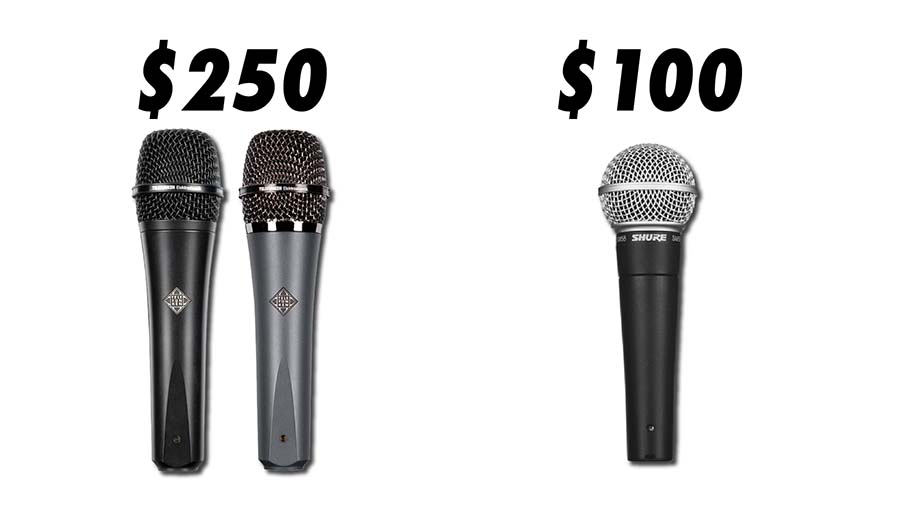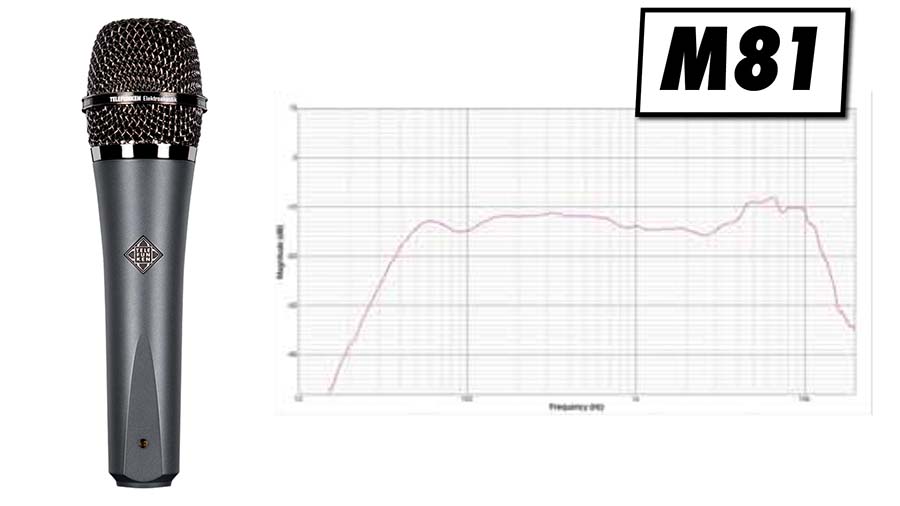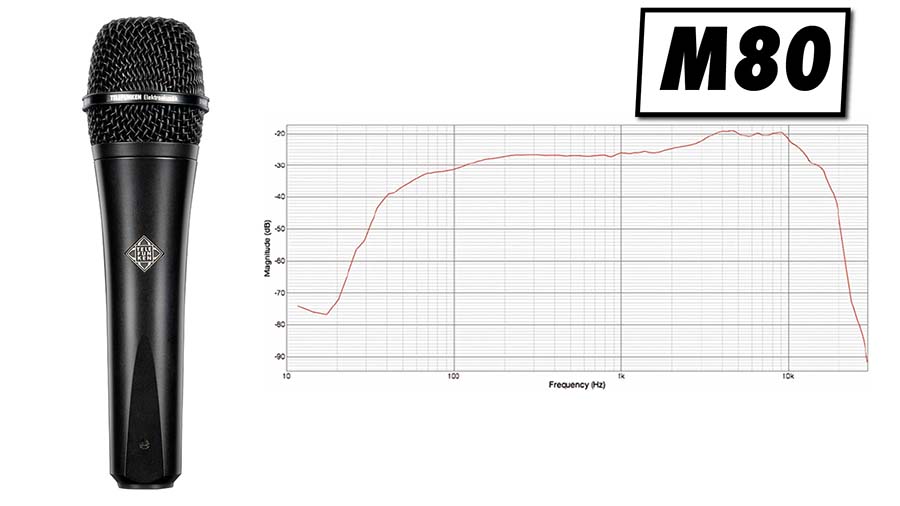In this post, I’m comparing the Telefunken M80 and M81 handheld dynamic microphones. I’ll also compare them to the familiar sound of a Shure SM58 so that you can hear what makes them worth the extra money.
If this is our first time meeting, my name is Kyle. Welcome to Audio University!
Price & Build Quality
The Telefunken microphones cost about $250 each, while the Shure SM58 is just under $100.
I would consider all of these to be professional-quality microphones, but what is it about the Telefunken mics that makes them worth an extra $150?

The SM58 is renowned for its nearly-comical durability. Many things that you’d think would destroy these mics have no effect whatsoever!
However, the build quality between the $250 M80 and M81 and the $100 SM58 seems to clearly lean toward the Telefunken mics.
The M80 and M81 have a really nice weight to them that I didn’t expect the first time I held one. So, I have no reason to believe that they aren’t extremely durable as well. Plus, they have a nice flat edge that stops them from rolling which I really like.
Frequency Response
All three of these microphones have a frequency response with a bit of a boost in the high-mids and highs.

If you listen closely, you can hear that the Telefunken M81 is a bit darker, because of the boost in the low-mid frequencies. This makes it great for taming bright vocals, horns, or guitars as you’ll hear later in the video.
The M81 is a great choice for a vocalist with a harsh tone, for taming overly bright horns, or for dealing with cymbal bleed.

The Telefunken M80 doesn’t have this low-mid boost, but instead further boosts the high-mids and highs. This makes the M80 a lot more versatile than your common dynamic mic. The Telefunken M80 is my personal favorite snare microphone.
The M80 is great for adding a bit of brightness to vocals, snare drums, guitars or anything else that you want to bring up-front in the mix.

The Shure SM58 falls somewhere in the middle. It doesn’t have the low-mid boost, but the high-mid boost is also much more subtle. This is a safe microphone when you’re going for a natural sound, but it can leave something to be desired when you’re trying to get something to cut through the mix.
Polar Pattern
Both the M80 and M81 have supercardioid polar patterns, while the SM58 has a cardioid polar pattern.
That means the Telefunken microphones are a bit more directional with more rejection on the sides. This results in a bit more sensitivity from the rear.
Proximity Effect
Given that all three of these microphones are directional, they are all susceptible to the proximity effect.
That means that the closer you get to these microphones, the darker the sound will become. I wrote a post about the proximity effect that I recommend checking out if you’re interested in why this happens and how to prevent it.
Audio University Recommendations
If you choose to buy one of these microphones, you can contribute a part of your purchase to Audio University at no extra cost by using one of the links in this post.
By far, the Telefunken M80 is the most versatile microphone out of these three options. It reminds me of a Heil microphone in that it can replace a condenser microphone in many situations.
I find the Telefunken M81 to be more of a specialty microphone. It sounds a bit dark, as you can hear in the tests. However, this is exactly what you need in many situations, so I’m glad I’ve got it in my mic locker!
Of course, the Shure SM58 is an industry standard. If you’re pressed for time and just need something that you know will sound good, this is a go-to microphone. It’s an absolute essential, so make sure you’ve got at least one of them!
